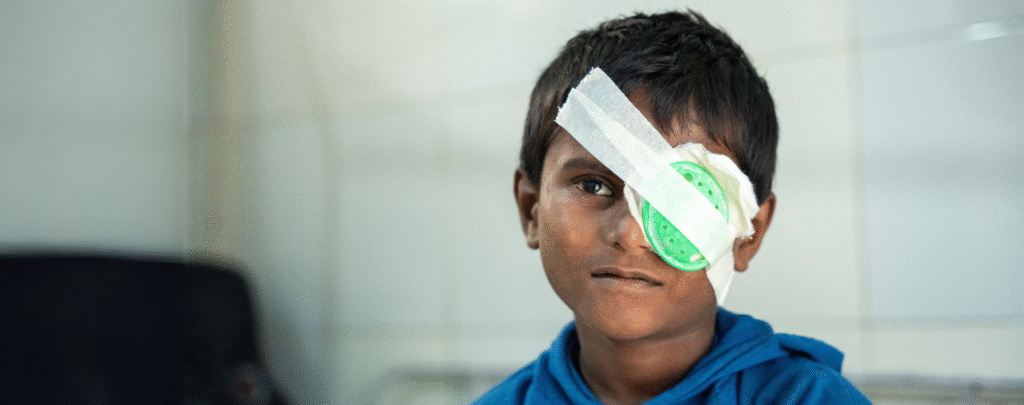At CBM UK, we’re working to end avoidable blindness and ensure that no one loses their sight simply because they’re poor or can’t access treatment
What does ‘avoidable blindness’ mean?
Avoidable blindness refers to vision loss that could have been prevented or treated with access to timely, affordable healthcare.
There are two types:
- Preventable blindness – where sight loss could have been avoided altogether (e.g through vaccinations or antibiotics)
- Treatable blindness – where sight could be restored or improved (e.g. with surgery or glasses)
In many cases, blindness is not a life sentence – it’s a matter of access.
What causes avoidable blindness?
Here are some of the most common causes:
1. Cataracts
A cloudy lens in the eye that causes blurred vision and eventually blindness.
Easily treated with surgery – often in under 30 minutes.
2. Trachoma
A painful eye infection caused by poor hygiene and a lack of clean water.
Preventable with surgery, antibiotics, facial cleanliness and environmental improvements (SAFE).
3. Uncorrected Refractive Errors
Conditions like short-sightedness, long-sightedness or astigmatism.
Easily corrected with a simple pair of glasses.
4. River Blindness (Onchocerciasis)
A parasitic infection spread by blackflies, found in parts of Africa.
Preventable through regular medication.
5. Diabetic Retinopathy
A complication of diabetes that affects the eyes.
Manageable with early diagnosis and laser treatment.
Why does it happen?
In many low-income communities, people go blind from treatable conditions because:
- Health services are too far away
- They cannot afford surgery or treatment
- There’s a lack of trained eye doctors
- Disability is stigmatised or misunderstood
- They don’t know help is available
Poverty is the biggest risk factor for avoidable blindness.
The impact of avoidable blindness
Losing sight affects everything: education, work, relationships, independence, and dignity.
- Children may drop out of school
- Adults can’t earn a living
- Families are pushed deeper into poverty
- People with disabilities face isolation and discrimination
But when someone’s sight is restored, everything can change.
How CBM is helping
At CBM UK, we work with local partners to:
- Fund life-changing cataract surgeries
- Train eye health workers and surgeons
- Provide glasses and low-vision aids
- Prevent diseases like trachoma and river blindness
- Ensure eye care is accessible to people with disabilities
Last year, CBM and our partners helped 1,113,034 people access vital eye health services.
What you can do
Together, we can help end avoidable blindness for good.
Learn more about our eye health projects
Donate – just £24 could fund a cataract operation
Share this blog to raise awareness




